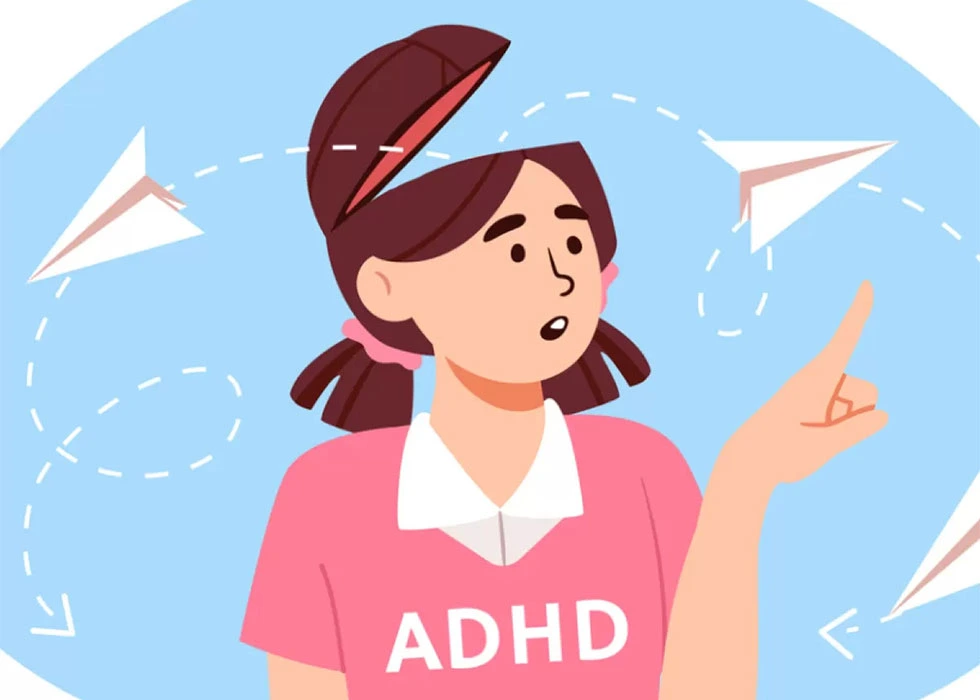
ADHD in Children and Teens: Symptoms, Causes & Treatment
- August 16, 2025
- 1 Like
- 18 Views
- 0 Comments
Attention-deficit/hyperactivity disorder (ADHD) is one of the most commonly diagnosed mental health conditions in children. It affects how young people focus, sit still, and control their impulses. While many children can be energetic or distracted from time to time, ADHD is different—it’s a persistent condition that can interfere with school, home life, friendships, and overall development.
ADHD is usually identified in the early school years when difficulties with paying attention, following instructions, or managing behavior become noticeable. Importantly, ADHD does not go away with age. While symptoms may change, many teenagers and even adults continue to live with the condition.
Types of ADHD in Children and Teens
Doctors generally classify ADHD into three main types, depending on the symptoms:
Inattentive type – Children may find it very hard to stay focused, follow through with tasks, or stay organized. They may lose things frequently, make careless mistakes, or appear to be daydreaming.
Hyperactive-impulsive type – These children are often “on the go.” They may fidget, talk excessively, interrupt others, have difficulty sitting still, and act without thinking.
Combined type – The most common form of ADHD, where children show a mixture of inattentive and hyperactive-impulsive symptoms.
Symptoms in Daily Life
Children and teens with ADHD often struggle in school, where sitting still, concentrating, and following structured routines are expected. They may:
- Appear restless or impatient.
- Have trouble remembering instructions.
- Start tasks but leave them unfinished.
- Find it difficult to wait their turn.
- Become easily frustrated, leading to outbursts or mood swings.
These challenges can affect self-esteem, making children feel as though they are constantly being corrected or falling behind their peers.
Causes and Risk Factors
The exact cause of ADHD isn’t fully understood, but research points to several factors:
- Genetics: ADHD often runs in families.
- Brain development: Differences in how certain brain areas grow and function may contribute.
- Pregnancy and birth factors: Premature birth, low birth weight, or prenatal exposure to alcohol, drugs, or smoking can increase risk.
- Environmental influences: Exposure to toxins like lead in early childhood may also play a role.
Diagnosis
There is no single test for ADHD. Diagnosis usually involves a detailed assessment by doctors, teachers, and parents. They look at how long the symptoms have been present, how severe they are, and whether they interfere with daily life.
A proper evaluation may include:
- Physical and neurological exams.
- Questionnaires or checklists completed by parents and teachers.
- Observing the child’s behavior in different settings.
- Ruling out other possible causes such as anxiety, depression, or learning difficulties.
Treatment Options
Managing ADHD in children and teens usually involves a combination of approaches:
- Behavioral therapy: Parents are often trained in behavior management strategies—setting routines, using positive reinforcement, and handling unwanted behavior consistently. Older children may also benefit from play therapy or counseling to help them manage emotions.
- Medication: Stimulants (such as methylphenidate or amphetamines) are the most common. They can improve focus and reduce impulsivity. Non-stimulant options (like atomoxetine, clonidine, or guanfacine) may be recommended if stimulants aren’t effective or cause side effects.
- Lifestyle support: Regular sleep, exercise, and a balanced diet play an important role. Structured routines at home and school help children stay organized and reduce stress.
Living With ADHD
ADHD doesn’t just affect the child—it impacts the whole family. Parents often feel frustrated or overwhelmed. Building a supportive environment makes a huge difference. Families can:
- Keep routines predictable.
- Give clear, simple instructions.
- Focus on praising good behavior rather than only pointing out problems.
- Stay in close communication with teachers, doctors, and therapists.
- Encourage children’s unique strengths and talents, whether in sports, art, or other activities.
Support groups for parents and families can also be incredibly valuable, offering advice and reassurance from those with similar experiences.
Outlook
With the right diagnosis, treatment, and support, children and teens with ADHD can thrive. Many learn strategies to manage their symptoms, build strong relationships, and succeed at school and beyond. Early intervention makes a big difference, so if you suspect your child may have ADHD, it’s important to seek professional advice.
✅ Takeaway: ADHD is not just “bad behavior” or “not paying attention.” It’s a real medical condition that, with the right support, can be managed effectively. Children with ADHD can lead full, happy lives when given the right tools and understanding.


Leave Your Comment